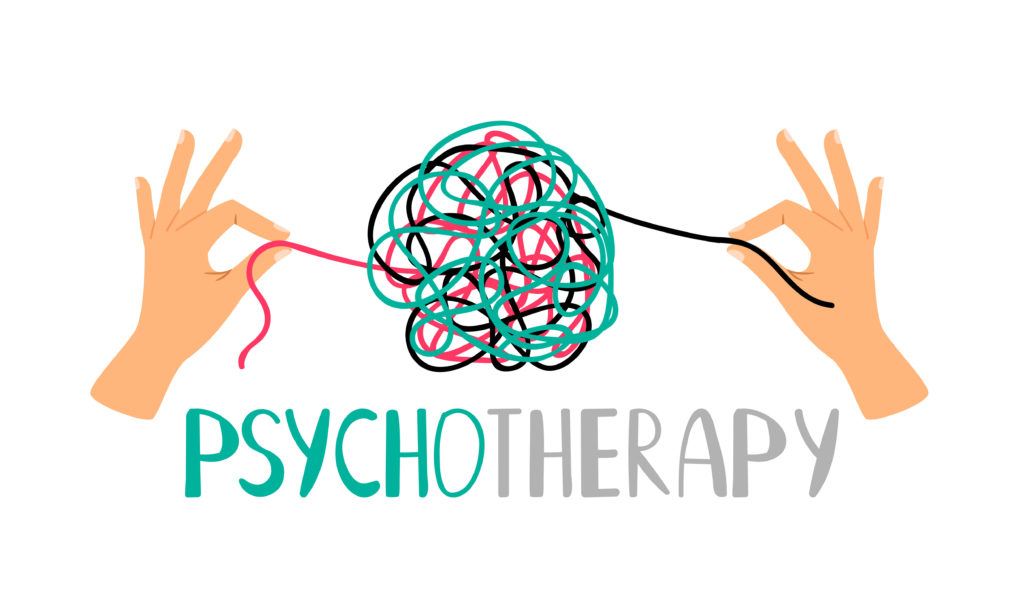Psychodynamic
Psychoanalysis has been the earliest known and organized therapy for mental disorders. It became significant during the early 20th century by one of the renowned clinicians of all time, Sigmund Freud. His theory emphasized that mental health problems originate in the unconscious conflicts and desires of people. He felt that psychoanalysis can be used to resolve such mental illnesses by identifying and dealing with these unconscious struggles. Psychoanalysis thus explores one’s early childhood experiences that may have ongoing repercussions on a person’s mental health in the present and later life. Basically, it is an intensive long-term approach during which the affected person meets with the therapists a couple of times every week.
Psychoanalytic Therapy
In the earlier stages, Freud felt that mental health problems arise due to inappropriate sexual urges emanating from conscious awareness. Later, however, he suggested that psychiatric issues are the outcome of tensions between the three different parts of the mind, the id, the ego, and the superego. According to Freud, the id represents pleasure-driven unconscious urges such as aggression and sexual desires that are animalistic. The superego is the semi-conscious part of the mind that understands and internalizes morals and societal judgment. For example, you know what behavior society expects from you. He believed the ego mediates between the id and the ego which is partly conscious. He felt that the goal of psychoanalytic therapy is to relieve this conflict by bringing the unconscious struggles into conscious awareness.
Psychoanalytic therapy today has been replaced by psychodynamic therapy. Although the basic principles remain the same, it puts clients in their social and interpersonal context. The focus is more on relieving psychological distress than on changing the person.
Psychoanalysis is a kind of talk therapy with special focus on the deeper roots of problems which create ongoing depression, anxiety, low self-esteem, aggression and several other forms of emotional disturbance. It focuses on the unconscious aspects in our life. The psychoanalyst invites the person to speak freely and follows a non-judgmental and non-authoritarian approach. He maintains the patient’s confidentiality and helps the person to express all the repressed feelings and bring out what is unconscious to consciousness. The discussion may include dreams, fantasies and the role of the couch. Psychoanalysis is a continuously evolving field incorporating the current psychological and social concepts.
Techniques in Psychoanalysis
Sigmund Freud, the founding father of psychoanalysis, developed further on the work of Josef Breuer and others. Psychotherapeutic theories and techniques developed by him became popular as psychoanalysis or psychoanalytic therapy. Therapists typically adopt several techniques to explore the unconscious mind of their patients. Free association is one such technique that enables the patient to share all thoughts that come to mind without organizing or censoring them in any way. Typically the patient reels out whatever comes into his or her head, one thought after the next, without allowing any conscious criticism to shape what he is speaking.
The psychoanalyst then goes through the entire sequence and tries to discern patterns or underlying meaning in the patient’s thoughts using his expertise. Exercises related to free association are often used specifically for childhood recollections. Psychoanalysts believe that a person’s childhood relationships with caregivers influence the way that a person relates to others, and predicts later psychiatric difficulties. Therefore, they feel that exploring these childhood memories, through free association or otherwise, can provide insights into a person’s psychological makeup. Psychoanalysts also discuss their patients’ dreams because we do not always have the ability to consciously recall these deep memories.
According to Freudian theory, our dreams contain manifest content as well as latent content which means that the content of the dreams can be literal or symbolic. For example, a person dreams that her teeth are falling off. The manifest content is that the teeth are actually falling off. However, the symbolic meaning could be that it reflects the person’s concern that she is losing her physical beauty, which is the latent or metaphorical content of the dream. The therapist’s job is to find out the latent content beneath the manifest content through the analysis of the dream.
In fact, Freud had a famous psychoanalytic couch in his consulting room that was draped in tapestries and pillows. The room itself was decorated with books, sculptures, and pictures on the wall. He would instruct his patients to lie comfortably on the couch and face away so that they feel less inhibited and focus.
Psychoanalytic and psychodynamic therapy
In today’s day and time, a psychotherapy patient may not agree to lie on a couch. In fact, he or she may sit facing the therapist. However, it is important to note that the therapist plays a receptive role in interpreting the thoughts and behavior of the patient and depends on clinical experience and psychoanalytic theory. If a patient begins to show unjustified anger toward the therapist, the therapist may understand this as an act of transference. As an example, a patient may be displaying feelings for people in his life (maybe anger towards her parent) onto the therapist. On the same note, the therapist will also need to be aware of his own thoughts and emotions, in a similar process, known as countertransference, and the therapist may displace his/her own emotions onto the patient.
The main aim of psychoanalytic theory is to help people disclose the conflicting, buried content from their mind and enable therapists to use various tactics like seating patients to face away from them to promote self-disclosure. Since the therapist will spend more time with a patient, he or she will be able to consider his or her relationship with the patient as a reflection of the patient’s mind.
Important Characteristics and Experiences in Psychoanalysis Free association.
One of the important characteristics of psychoanalysis is that the therapist listens to the patient without any censorship or filtering. The patient talks about whatever comes to his or her mind referred to as free associations, which the therapist tries to interpret. He looks for unconscious causes of symptoms.
Dream Analysis
In dream analysis, the therapist listens to the patient as he or she describes the dream. He then analyzes the symbolism of the dreams by probing into the unconscious thoughts of the patient and interprets their significance.
Insight
Insight refers to the patient’s understanding of the unconscious causes of his or her symptoms.
Interpretation
Interpretation refers to the manner in which the therapist tries to understand the underlying unconscious problems of the patient through the expressed thoughts. The analyst may use some interpretations on the patient and observe the response.
Resistance
Resistance is the manner in which the patient uses the defense mechanisms to avoid painful feelings in his or her unconscious. The patient may react with hostile feelings toward the therapist or forget and miss appointments. The therapist tries to help the patient get insight into the causes of the resistance.
Transference
Transference occurs when the patient redirects the feelings experienced in an important personal relationship toward the therapist. For example, a patient may transfer his or her feelings of guilt that come from his mother or father to the therapist.
Advantages and Disadvantages of Psychoanalytic Therapy
At one point of time, psychoanalysis was the only type of psychotherapy that was available. Today, however, there are less number of therapists who follow this approach. Psychoanalysis is not suitable for some patients, particularly those with mental retardation or severe psychopathology. Another factor is that it lasts several years and hence is an expensive form of treatment. Nevertheless, some patients and therapists continue to find it rewarding.
One of the disadvantages of psychoanalysis and similar approaches is that there isn’t enough evidence of empirical research regarding its effectiveness. Some available evidence regarding these treatments does not suggest that it leads to improved mental health (Driessen et al., 2010). In fact, researchers have even questioned the validity of few reviews that indicated that long-term psychodynamic therapies might be beneficial (Leichsenring & Rabung, 2008). In spite of this, psychoanalytic theory continues to be the first attempt of using psychotherapy to treat mental illness, which in turn led to more modern methods that are used today.
Free association
In psychodynamic therapy, free association refers to a situation in which the patient reports all thoughts that come up to his or her mind without withholding them or censorship. The therapist then interprets these thoughts.
Psychoanalytic therapy
Psychoanalytic therapy refers to the therapeutic approach of Sigmund Freud that focuses on resolving unconscious conflicts. The (psychodynamic therapy) treatment means applying the principles of psychoanalysis in a brief and more individualized format.








